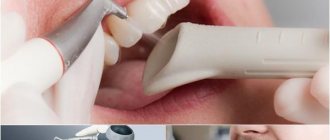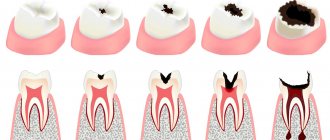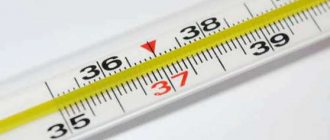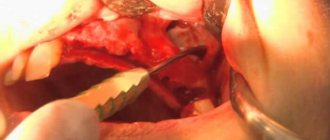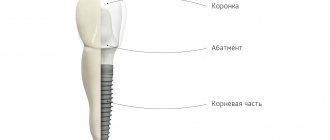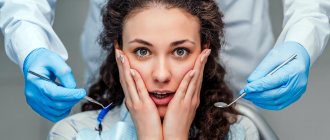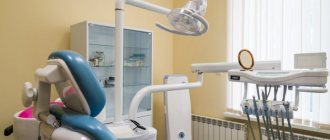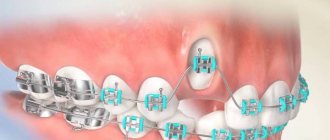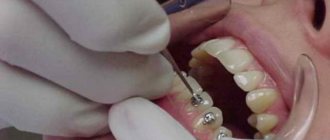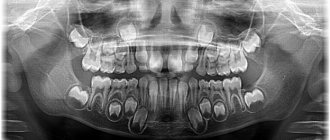Insufficient oral care leads to the formation of soft plaque and stones on the teeth, resulting in inflammation. At first, its symptoms are quite harmless: slight bleeding of the gums, soreness, and sometimes swelling. But gradually tooth mobility and pus discharge from under the gums appear. At this stage, we can safely talk about advanced periodontitis, for the treatment of which curettage of periodontal pockets is used. What kind of procedure is this?
Periodontal pocket: what is it?
Due to the inflammatory process, bone tissue is destroyed and gradually replaced by granulation tissue. The latter mainly consists of osteoclasts and microbial cells, which, gradually expanding their “habitat” zone, lead to even more active bone atrophy. Against the background of such “events”, a violation of the ligament between the tooth and gum occurs.
As a result, a periodontal or periodontal pocket is formed. It is a space equal in size to the area of destroyed bone and filled with granulation tissue, purulent masses, and food debris. Such a pocket is diagnosed in one of the following ways:
- using x-rays. Bone atrophy is determined by the presence of darkening in the image;
- periodontal probe. Normally, the probe penetrates under the gums by 1-2 mm; exceeding this indicator indicates a gum pocket.
Lack of treatment leads to further deepening of periodontal pockets, as a result of which the teeth sooner or later take a “fan” position. It should be noted that folk remedies not agreed with the doctor in this case are not considered treatment.
Signs of inflammation
Inflammation of periodontal pockets is indicated by:
- changes in the color and structure of the gums - they turn red, become loose and swollen,
- bad breath,
- bleeding gums when brushing teeth and eating,
- soreness of the mucous membranes,
- discharge of purulent contents from under the gums,
- general deterioration in health due to increased temperature and intoxication of the body.
In order to prevent the resorption of jaw tissue, the development of sepsis and other serious complications, at the first signs of the inflammatory process you need to consult a specialist.
Why is curettage of periodontal pockets necessary?
There is a practice when, to get rid of periodontitis, they do not go through surgery, but limit themselves to taking antibiotics, removing dental plaque, using a laser or local anti-inflammatory therapy. But such steps are more likely an attempt to cure the disease than a truly effective remedy for periodontitis. For what reasons may such therapy not work?
- If the periodontal pocket is very deep, then it is impossible to completely clean it of deposits with ultrasound. The procedure is carried out blindly: the dentist “feels” with the attachment under the gum, but does not see what is happening there. Therefore, even after the highest quality cleaning, there remains a possibility that some amount of subgingival stone remains in its place.
- Anti-inflammatory therapy and cleaning of subgingival deposits cannot guarantee that periodontitis will stop, since a favorable “climate” for the development of infection still remains.
This is why most doctors strongly advise patients to undergo surgery. Only surgical intervention can get rid of all the problems associated with periodontitis, namely:
- remove granulations;
- remove gum pockets;
- remove deposits from under the gums.
Among the most popular surgical methods for treating periodontal diseases is curettage of periodontal pockets. If necessary, it can also be used for periodontal disease and gingivitis.
Clinical researches
Clinical studies of anti-sensitive toothpaste “Asepta Sensitive”, conducted at the Department of Therapeutic Dentistry of St. Petersburg State Medical University named after. acad. I.P. Pavlova, conducted over 4 weeks, found that:
- When probands used the Asepta Sensitive therapeutic and prophylactic toothpaste, there was a significant improvement in the hygienic and periodontal conditions of the oral cavity and a decrease in the increased sensitivity of the hard tissues of the teeth, which was confirmed by the positive dynamics of clinical indices.
- After just two weeks, a pronounced decrease in the increased sensitivity of hard dental tissues in probands was observed due to the desensitizing effect of the therapeutic and prophylactic toothpaste used.
Asepta Sensitive toothpaste has been shown to have a good anti-inflammatory effect on inflamed, swollen and bleeding periodontal soft tissues.
During the tests, it was found that under the influence of Asepta Sensitive toothpaste, there was a significant reduction in gum bleeding.
Regular use of this therapeutic and prophylactic agent led to a significant improvement in the general dental status of the probands, which confirmed the validity of its use in the complex of ongoing therapeutic and preventive measures.
According to the results of clinical trials of the ASEPTA® rinse, it was found that after 3 weeks of using the ASEPTA® rinse, gum bleeding decreases by 28.3%, inflammation decreases by 32.3% and the hygienic condition of the oral cavity improves by 33.5%.
Sources:
- Clinical studies of antisensitive toothpaste “Asepta Sensitive” (A.A. Leontyev, O.V. Kalinina, S.B. Ulitovsky) A.A. LEONTIEV, dentist O.V. KALININA, dentist S.B. ULITOVSKY, Doctor of Medical Sciences, Prof. Department of Therapeutic Dentistry, St. Petersburg State Medical University named after. acad. I.P. Pavlova
- Report on clinical trials to determine/confirm the preventive properties of commercially produced personal oral hygiene products: mouth rinse "ASEPTA PARODONTAL" - Solution for irrigator." Doctor of Medical Sciences Professor, Honored Doctor of the Russian Federation, Head. Department of Preventive Dentistry S.B. Ulitovsky, doctor-researcher A.A. Leontiev First St. Petersburg State Medical University named after academician I.P. Pavlova, Department of Preventive Dentistry.
- Report on determining/confirming the preventive properties of commercially produced personal oral hygiene products: Asepta toothpaste used in combination with Asepta mouthwash and Asepta gum balm Head. Department of PFS Doctor of Medical Sciences Professor S.B. Ulitovsky St. Petersburg State Medical University named after Academician I.P. Pavlova. Faculty of Dentistry. Department of Preventive Dentistry.
Closed curettage of periodontal pockets: how to do it
The operation is effective when the depth of the gum pockets is 3-5 mm.
Conventionally, the following stages of the procedure are distinguished:
- Examination of the gums, introduction of the patient into local anesthesia.
- Cleaning pockets without cutting the gums.
- Polishing of tooth roots.
At the same time, the operation can be performed in the area of 2-3 teeth. Within a week, the main wounds heal, but the process of forming connective tissue and attaching the gum to the tooth takes about a month. A significant disadvantage of closed curettage is that during the intervention the doctor does not see whether all pathological formations have been removed.
If the depth of periodontal pockets is more than 5 mm, such an operation can only temporarily stop the development of periodontitis. Partial removal of granulations and clearing of deposits allows for temporary respite, but in almost 100% of cases the disease begins to progress again.
Who may develop a periodontal pocket?
In most cases, the overhanging edge of the filling is a serious cause of toothache , because the tooth reacts to any foreign objects and inflammation. Professional dentists say that periodontal pockets most often make themselves felt between the ages of thirty and forty years. Moreover, it occurs more often in men, especially if they are heavy smokers. Adolescents may develop false pockets, which go away over time and do not cause any consequences. However, you need to pay attention to the fact that, in principle, dental problems can occur in anyone and at any age, so daily thorough oral hygiene is mandatory.
Open curettage of periodontal pockets: features of the procedure
The intervention involves the following stages:
- Cleaning teeth from plaque and tartar.
- Use of anti-inflammatory drugs.
- If necessary, splinting of mobile teeth.
- A gingival incision near the neck of the teeth, helping to peel off the mucous membrane from the bone tissue.
- Removal of granulations with a curette and stones with ultrasound.
- Antiseptic treatment of dental roots.
- Inserting synthetic tissue into cleaned pockets to encourage natural bone growth.
- Apply sutures and cover the wound with a gum bandage.
1.5 weeks after surgery, the sutures are removed. After a few months, complete restoration of the damaged tissue occurs, and the gingival papillae again close the gaps between the teeth. Sometimes the operation leads to exposure of the roots, but the degree of gum recession directly depends on how much bone tissue has been destroyed.
Curettage of periodontal pockets is often the only way to get rid of loose teeth and purulent discharge from the gums. Therefore, if the disease has already progressed, and the operation seems too expensive, there is no need to save. Further dental implantation will cost a much larger amount.
general information
Periodontitis is an inflammatory condition of the gum tissue. Gradually, the pathology spreads to ligaments, bones, and tooth roots. Periodontium is the soft tissue located around the tooth in the socket. It binds the tooth to the gum and elastic ligaments. Thanks to this system, the tooth does not fall out of the socket, is firmly fixed, and does not tilt. Only minor, physiological movement is allowed. However, this mobility remains invisible and is recognized only by dentists. In everyday life, people do not notice this feature. People need reliable ligaments to facilitate the movement of teeth during chewing; they act as shock absorbers.
Periodontitis or periodontal disease is formed due to the constant attack of pathogenic microorganisms, the development of pathological conditions and other negative factors. The ligaments are gradually destroyed, so the pathology gradually spreads to the root system. The height of the tooth root becomes smaller, so it begins to wobble and gradually falls out. Infection can spread from adjacent tissues, for example when bacteria from gingivitis spread to the periodontal area.
Today we will discuss a problem that is familiar to many - yellow spots on the teeth. Let's talk about the reasons for their appearance and effective methods of combating them. There are many of them (reasons and methods). Read more in the article: “yellow spots on teeth - methods of control in adults and children.”
Indications and contraindications
When a patient comes to the clinic with such a problem, they always take an x-ray.
It will show how severely the periodontal tissue is affected, what means are best to use for complex treatment, and whether surgical intervention is necessary.
There are 5 common indications:
- The appearance of severe loosening of teeth.
- Inflammation, accompanied by an increase in tissue temperature, redness, swelling, and pain.
- Large dental stones.
- Developing a deep true pocket.
- Exhaustion of conservative treatment options with antibiotics and other means.
The decision that curettage can be performed is made only after a comprehensive assessment of the situation and weighing of the data obtained. The list of contraindications includes the following:
- Pronounced fibrous changes developing inside the pocket.
- Severe thinning of gum tissue.
- The pocket depth is more than 6 mm.
- Tooth mobility of the third degree.
Most contraindications are temporary. It is not recommended to carry out the procedure if, for some reason, bacteria are actively multiplying in the mouth.
In such a situation, dental intervention simply will not have an effect and you will have to find the cause of the problem and eliminate it.
Treatment methods
When selecting therapy, an integrated approach is used. The source of infection is initially eliminated. The types and number of procedures are selected depending on the severity of the disease. In addition to treatment in the dental office, procedures are performed at home. Additionally, the doctor advises getting rid of bad habits (drinking alcohol, smoking) and treating systemic diseases.
